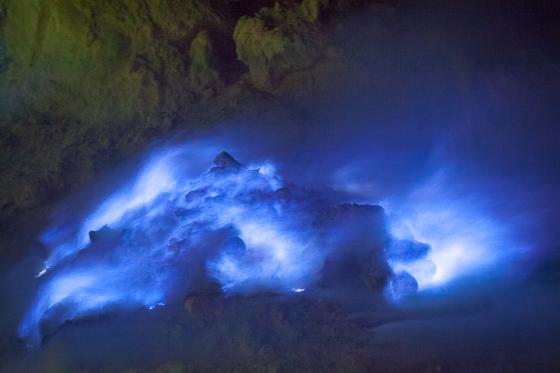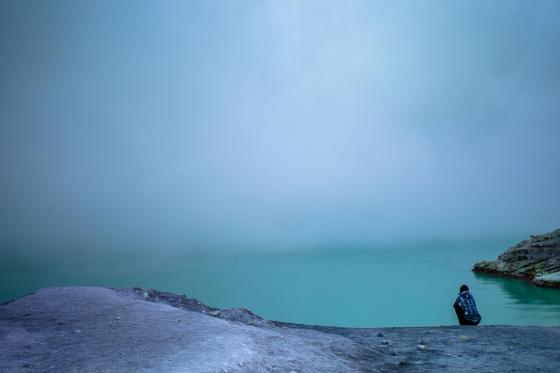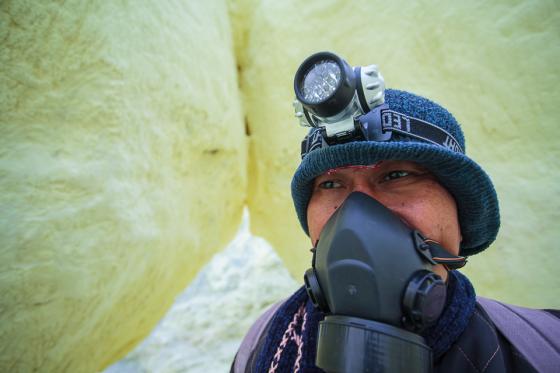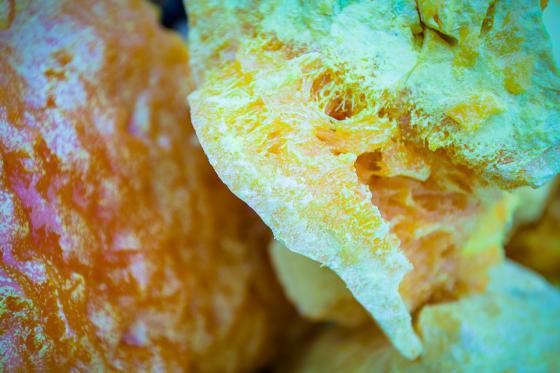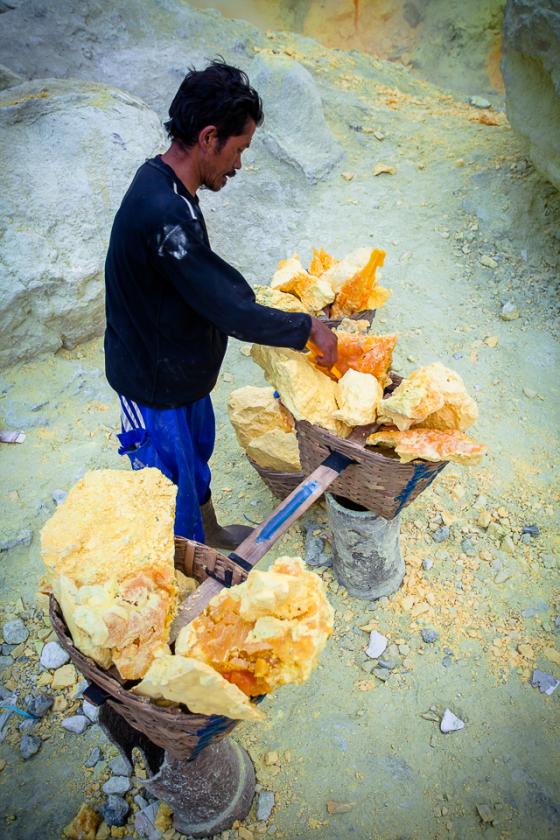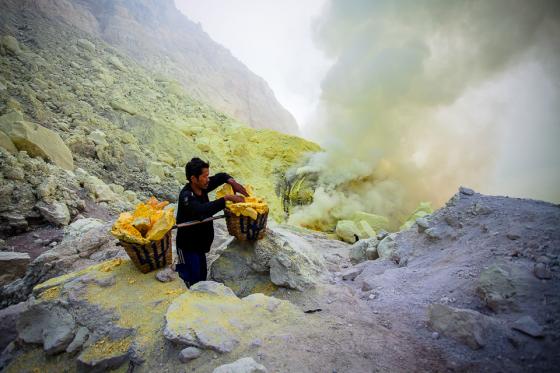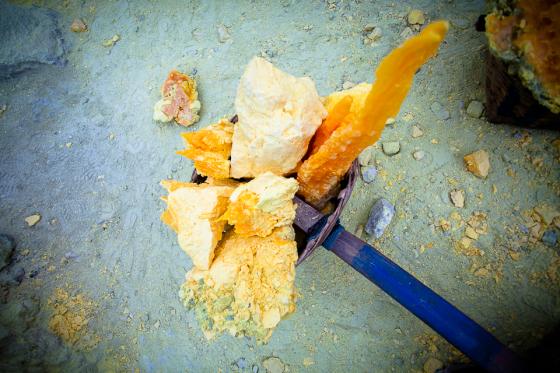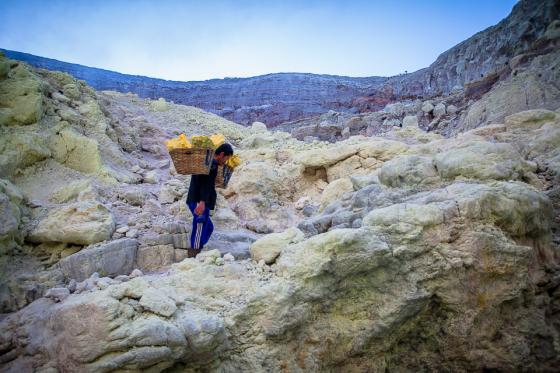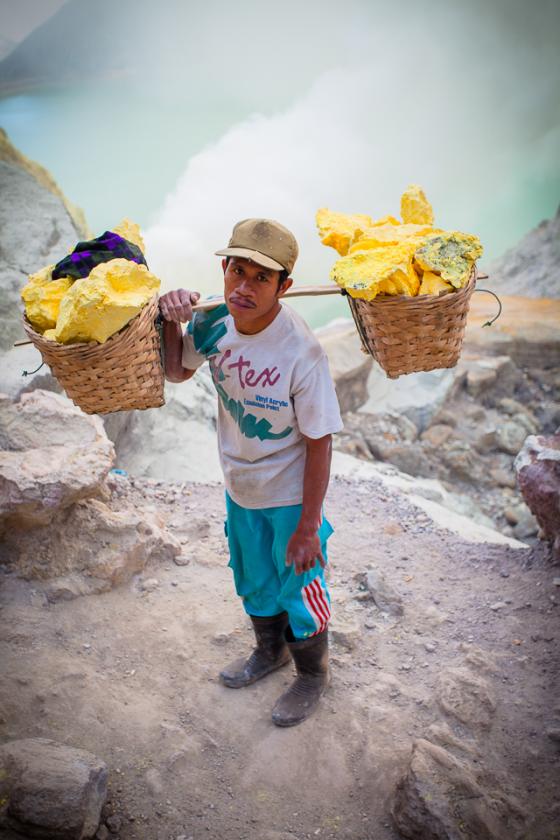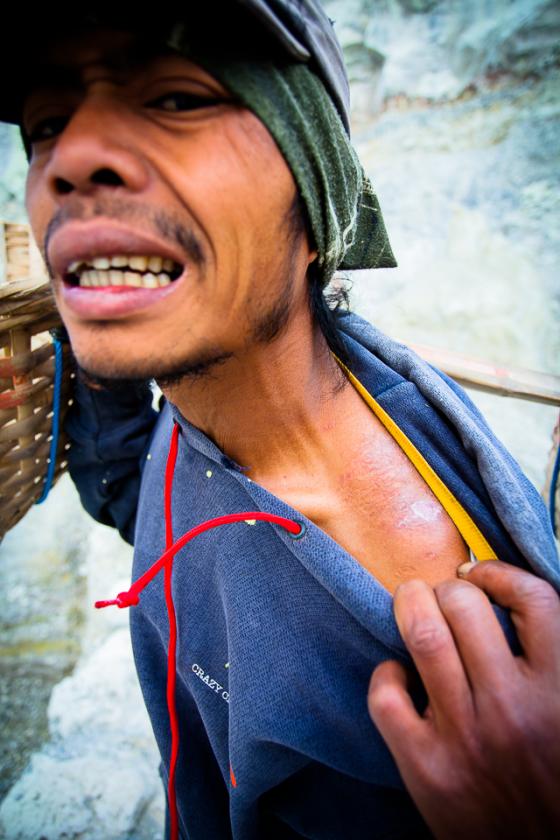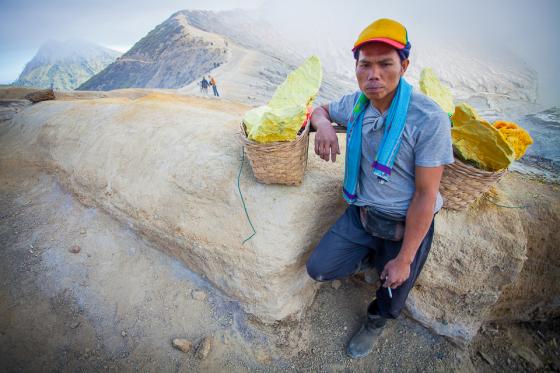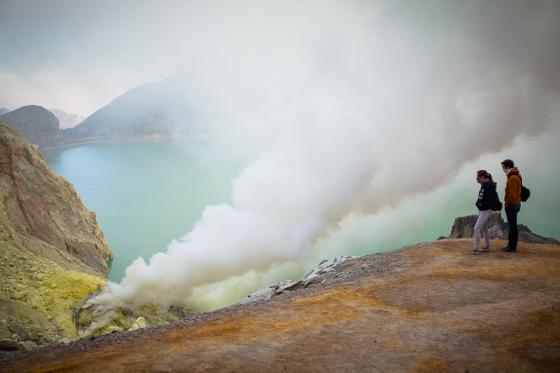The Sulfur Miners of Ijen Crater--Java, Indonesia
In Java you can find a number of epic locations to experience and photograph. If you're reasonably fit and are up to climbing a slightly hazardous mountain path (due to slippery stones on a fairly steep trail), then Ijen Crater should definitely get on your short list.
After a strenuous walk up a wide path in the dark, you descend down a narrow zig-zagged trail to the bottom of the crater. As you enter the crater you'll enveloped from time to time by whiffs of rotten egg sulfur smells.
By arriving before down, you'll get to see the bizarre blue flames of Ijen Crater bursting out of cracks in the crater's floor.
As the sun begins to burn through the morning fog, you begin to discern the beautiful azure-colored sulfur infused crater lake.
And then as more light burns through the mist the sulfur rock formations come alive in brilliant yellow tints.
If you get really close to some of the vents, you'll want to wear a breathing mask.
Here you'll actually be able to see liquid sulfur flowing . . .
before it freezes into fibrous rock.
Before the sun begins to heat up the famed sulfur miners (the subject of many television documentaries on themes about the worst and most dangerous jobs in the world) descend the rocky trail to gather their morning loads.
Despite the widespread stories that each of these men has hauled at least one friend out dead--overcome with the fumes, it's not quite true. They assure me that it's been decades since a single event when several died in a freak burst of sudden high volcanic activity in the late 1970s.
But the work is hard--even brutally hard. Unlike the one-time visitor, these miners regularly inhale levels of sulfur fumes that can't be "good for you" on their twice daily treks.
They load up about 80 kilograms of sulfur on their twin-basket shoulder polls.
Then they begin the slow, painful ascent out of the crater, all the time seeing ant-like earlier climbers at their goal--the rim high above them.
They frequently stop to catch their breath after clearing the low hanging sulfur clouds at the lake's surface.
There's no fat on these men, and their shoulders reveal tough calluses from the torturous weight of the shoulder poles.
Yet, some are amazingly upbeat about the job. Earning about US $5 per day in this remote part of Java is considered a rare privilege--despite the back-breaking labor.
This place has literally changed little over time. Apart from the miner's switch from traditional torches to modern battery-operated flashlights, their manner of work has not changed or become in any way more efficient since sulfur started being mined here decades ago.
This is in itself part of the amazement that Ijen crater causes in visitors. As miners rest briefly for a smoke at the top before carrying their burdens down to awaiting trucks far below, a visitor commented to me, "There's no way I would ever do that job twice the same way. If I had to do that once, I'd find a more efficient way to get sulfur out of that crater before you could ever get me to do it again!"
But despite the fact that visitors find it mind-boggling, traditions die hard in Java--and some show no signs of ever dying.
Like what you see in Java. Consider joining us on a photo journey to Java and Bali--available for a limited time.
There's nothing quite like the amazing landscapes and peoples of Indonesia. There's a reason it's my favorite place to photograph.

